
According to our dharma, the ultimate goal of human life is to become one with God. There are various pathways for a devotee, to achieve unity with the divine. Just like how a destination has different routes, a devotee can choose a path and travel on it at his/her own pace.
This flexibility is given to a devotee because every human being is unique and different. Some people are emotional, while some are intellectual. Hence, based on the various personal traits, different paths are suggested in our scriptures, they are:
1. Karma Yoga – The path of selfless service (to oneself and the society).
2. Bhakti Yoga – The path of love, devotion, and surrender to Ishvara.
3. Jnana Yoga – The path of knowledge.
4. Raja Yoga - The path of strengthening the mind through meditation and breathing
Out of these Paths, Bhakti Yoga is supposed to be one of the oldest, with its roots in various Upanishads.
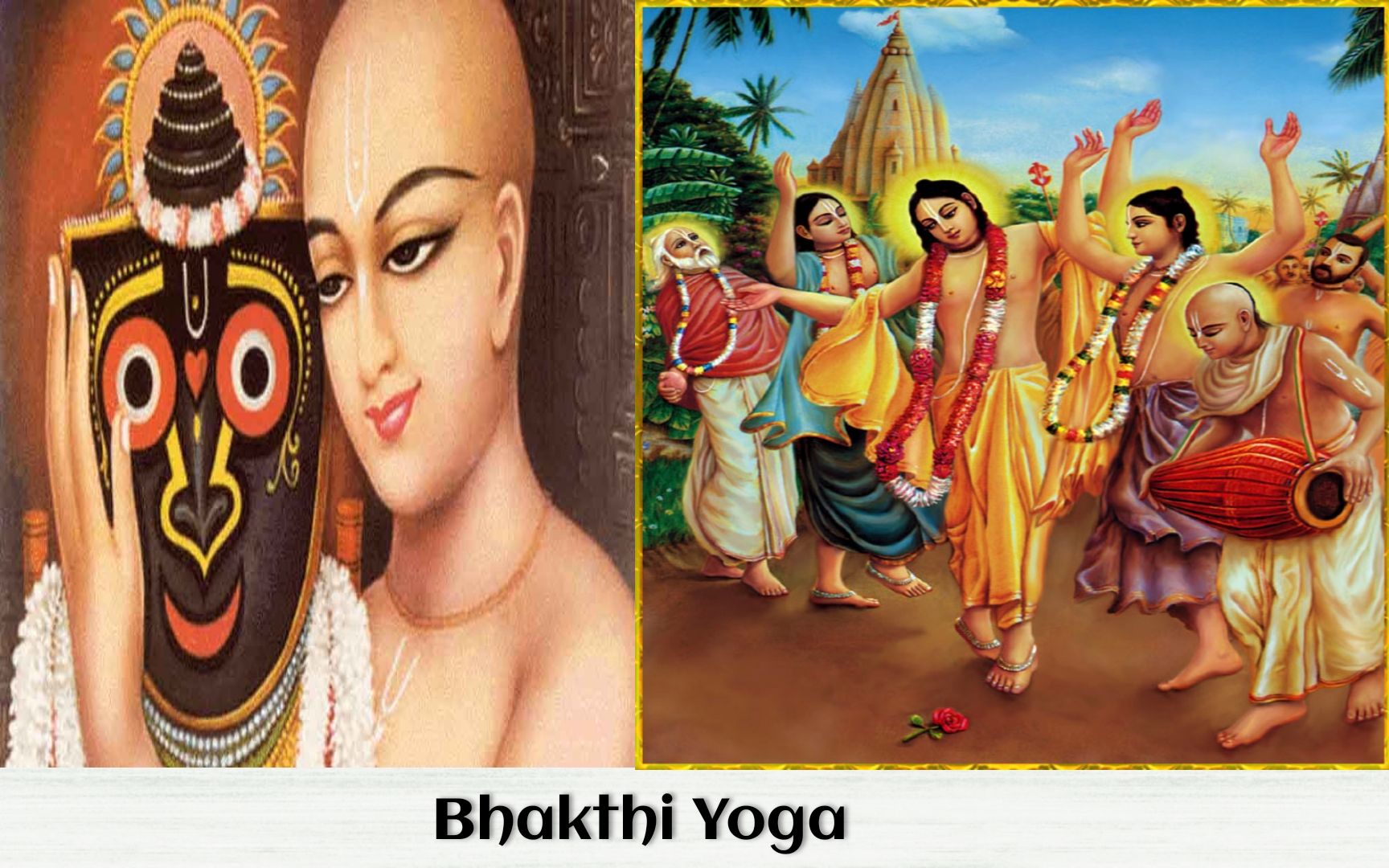
Bhakti Yoga comes from two words – Bhakti and Yoga. Spiritually speaking, the word Bhakti means supreme love, attachment, or devotion towards Ishvara, and Yoga means union. Hence, Bhakti Yoga signifies the joining together or union of one’s Atma (Soul) with the Brahman (The Supreme Self) through devotion.
A Bhakta or a devotee can achieve union with the Brahman through an intense yearning or devotion. This devotion can be physical (where a devotee prays, fasts, or makes sacrifices), mental (where a devotee utters special mantras), or spiritual (where a devotee meditates and practices renunciation).
Bhakti Yoga was familiarized by the Saints of Vaishnavaite and Shaivaite philosophies in India. These saints from the olden ages have always been the epitome of Bhakti. They travelled the length and breadth of our country, singing the praise/glories of their Lord and propelled the spread of Bhakti Yoga.
One such Shaivaite saint, Pattinathar has sung a hymn on Lord Shiva, which beautifully describes the Bhakti or devotional aspect of the saints in a vivid manner. This song was sung originally in Tamil at the temple of Shri Kalahasthi (presently Andhra Pradesh) and it goes:
“வாளால் மகவரிந்து ஊட்டவல்லேன் அல்லன்;
மாதுசொன்ன சூளால் இளமை துறக்கவல்லேன் அல்லன்;
தொண்டு செய்து நாளாறில் கண்இடந்து அப்பவல்லேன் அல்லன்
நான் இனிச்சென்று ஆளாவது எப்படியோ திருக்காளத்தி அப்பருக்கே?”
In the song above, Patinatthar compares his level of devoutness to that of 3 great Shaivaite saints who lived before him. He says that he cannot match up or be as devoted as,
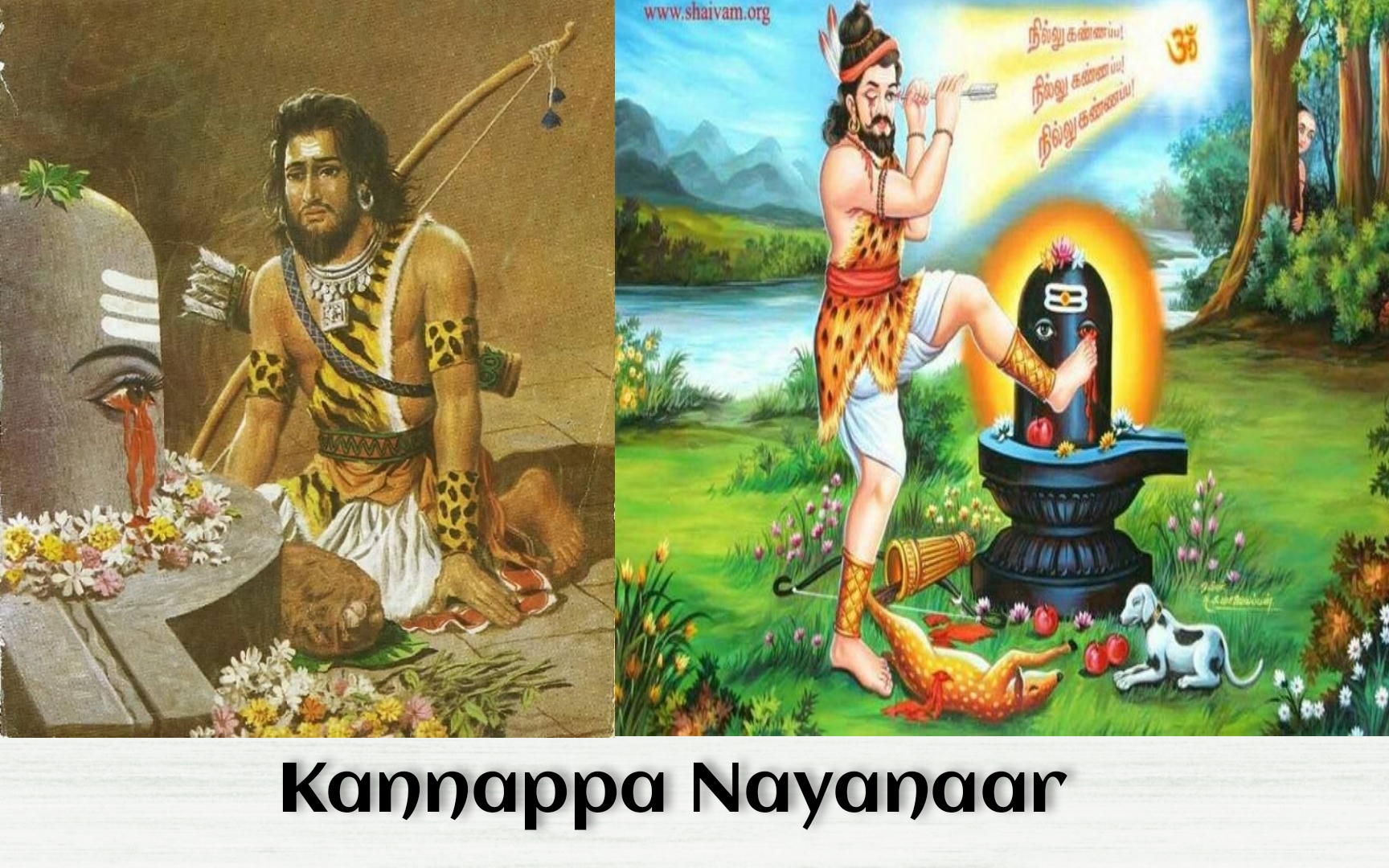
Siruthonda nayanar, who readily killed his son, cooked the meat and offered it to a Shiva Yogi, who was Lord Shiva in disguise.
Thiru Neelakanda Nayanar, who was a devotee of Lord Shiva. Although he was married, he swore his life to celibacy. When he was accused of losing a begging bowl of a Shiva Yogi, he refused to hold his wife’s hands to prove his innocence.
Kannapa Nayanar, who was a hunter by birth. He stumbled across a Shiva linga and continued to pray and adorn it with meat. One day, the idol bleed from the eyes, and this made Kannapa Nayanar offer his eyes to the Lord.
The above small 4 line song signifies and talks about the level of devotion by the Shaivaite saints of India.
According to our scriptures, emotions or Bhavas play a vital role in a devotee as it holds an important place in the practice of Bhakti Yoga. A person’s emotions are classified broadly into 5 Bhavas. A person can choose a path of Bhakti Yoga depending on whichever temperament suits him/her.
1. Shantha Bhava – unruffled and composed most of the time.
2. Dasya Bhava – Servant – Masterly emotions.
3. Sakhya Bhava – Friendly emotions.
4. Vatsalya Bhava – Motherly Emotions.
5. Madhurya Bhava – Beloved Emotions.
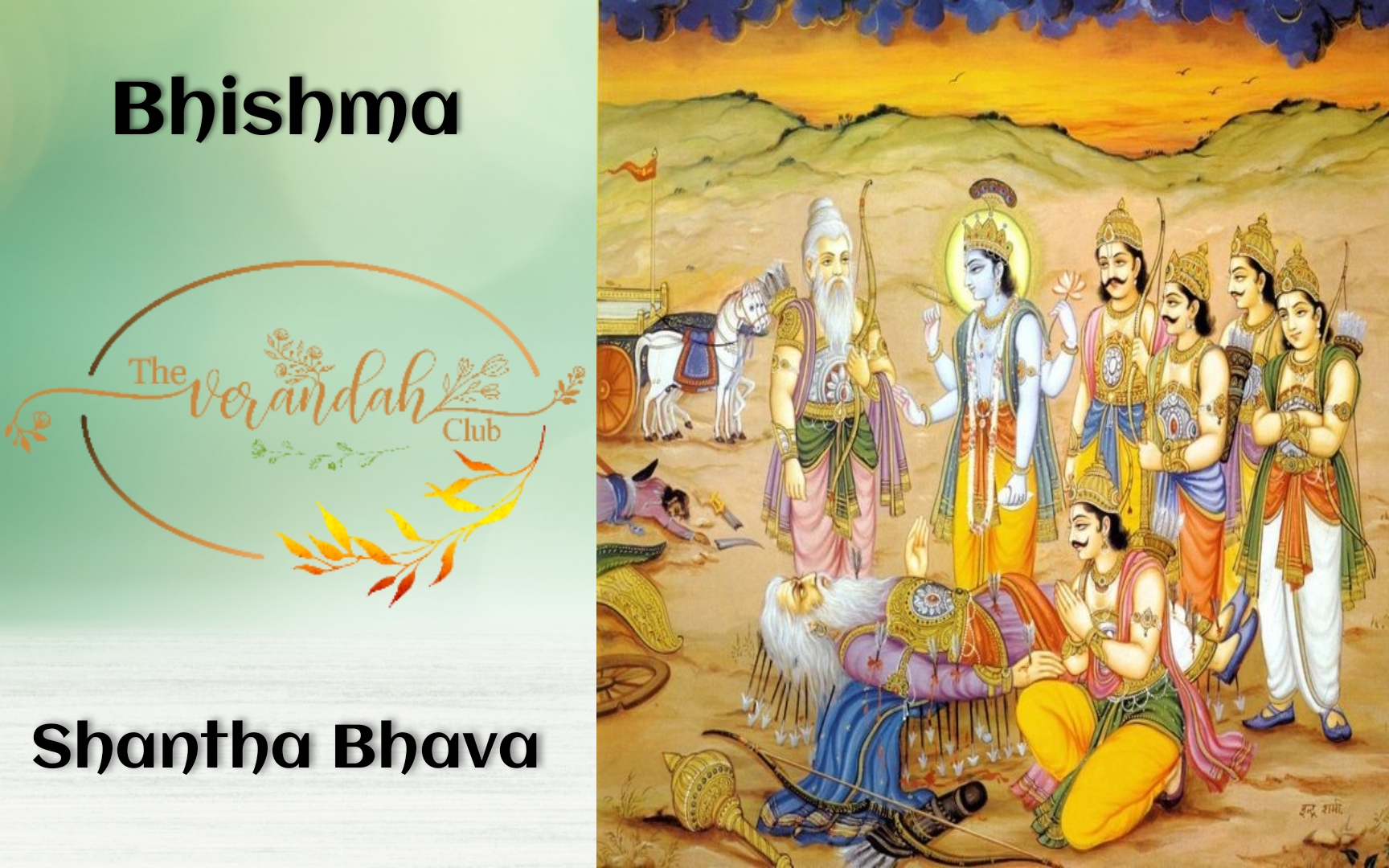
1. Shantha Bhava – here the devotee is very poised and feels at peace within himself. He does not overreact or exhibit emotions. However, his heart is full of love for his/her deity. There may be many ups and downs, but the devotee is always poised and is unaffected. Bhishma is the perfect example for Shantha Bhava. He had all his emotions under check throughout his life, and he was a devotee of Lord Krishna. It is believed that he was the person who gave us, ‘Shri Vishnu Sahasra Namam.’
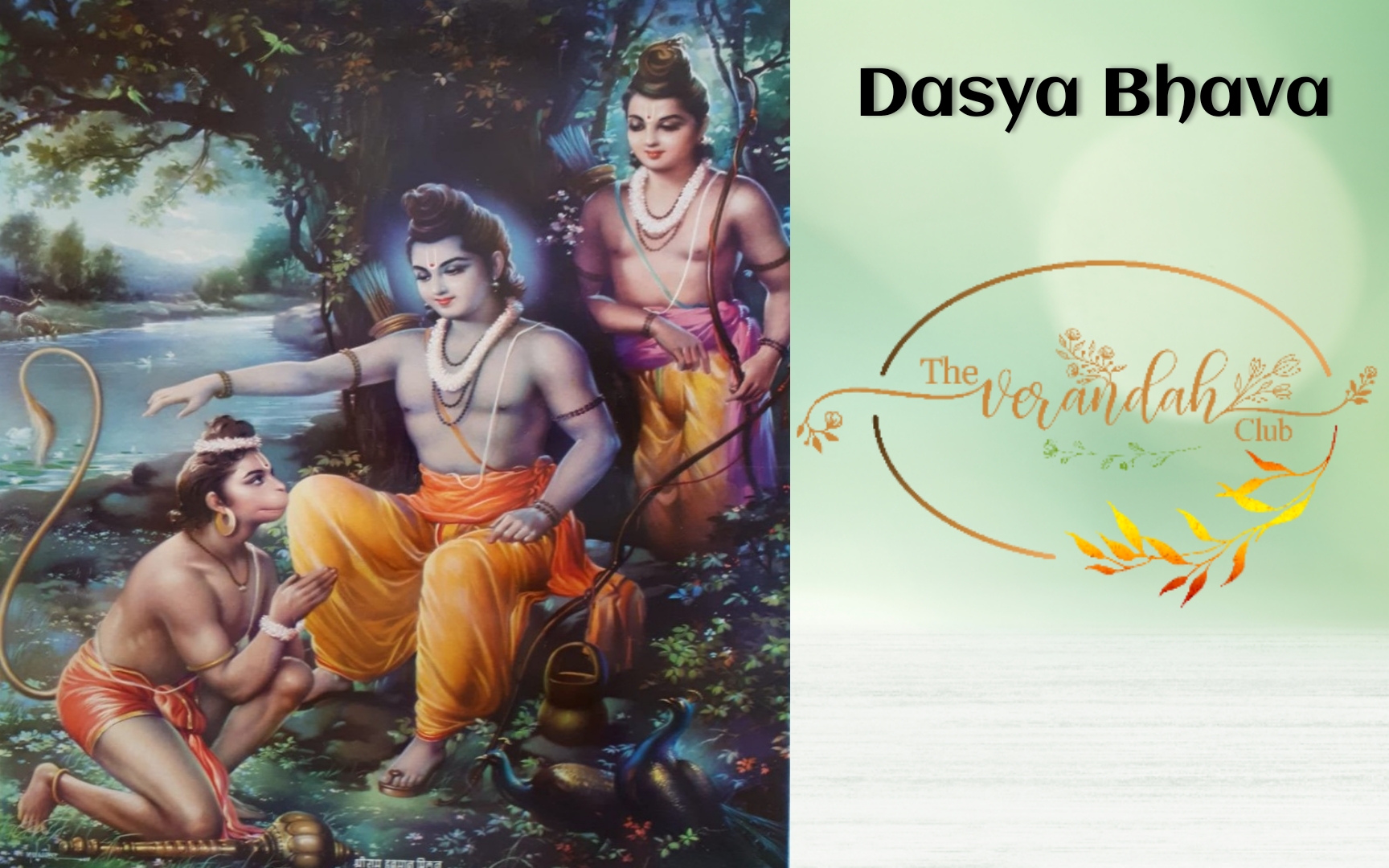
2. Dasya Bhava – Here, the devotee considers himself as a servant/slave to God. Here the devotee serves the world and people around him as if he/ she is serving the Lord. The devotee contemplates that everything/ everybody around is the Supreme Divine. Lord Hanuman is one of the perfect examples of a devotee practicing Dasya Bhava. He is a faithful servant of Lord Rama and found joy in serving his master. He had no wish of his own, and his only prayer was to be as an instrument to serve his master – Lord Rama. Another saint called Siruthondar Nayanar not only saw himself as a servant to Lord Shiva, but to all the Shiva devotees as well. He dedicated his whole life in serving the Lord. Hence, he got his name Siruthondar (small servant) Nayanar. (Saint Sekkizhar had compiled ‘Periya Puranam’ and mentions the story about Siruthondar in detail).
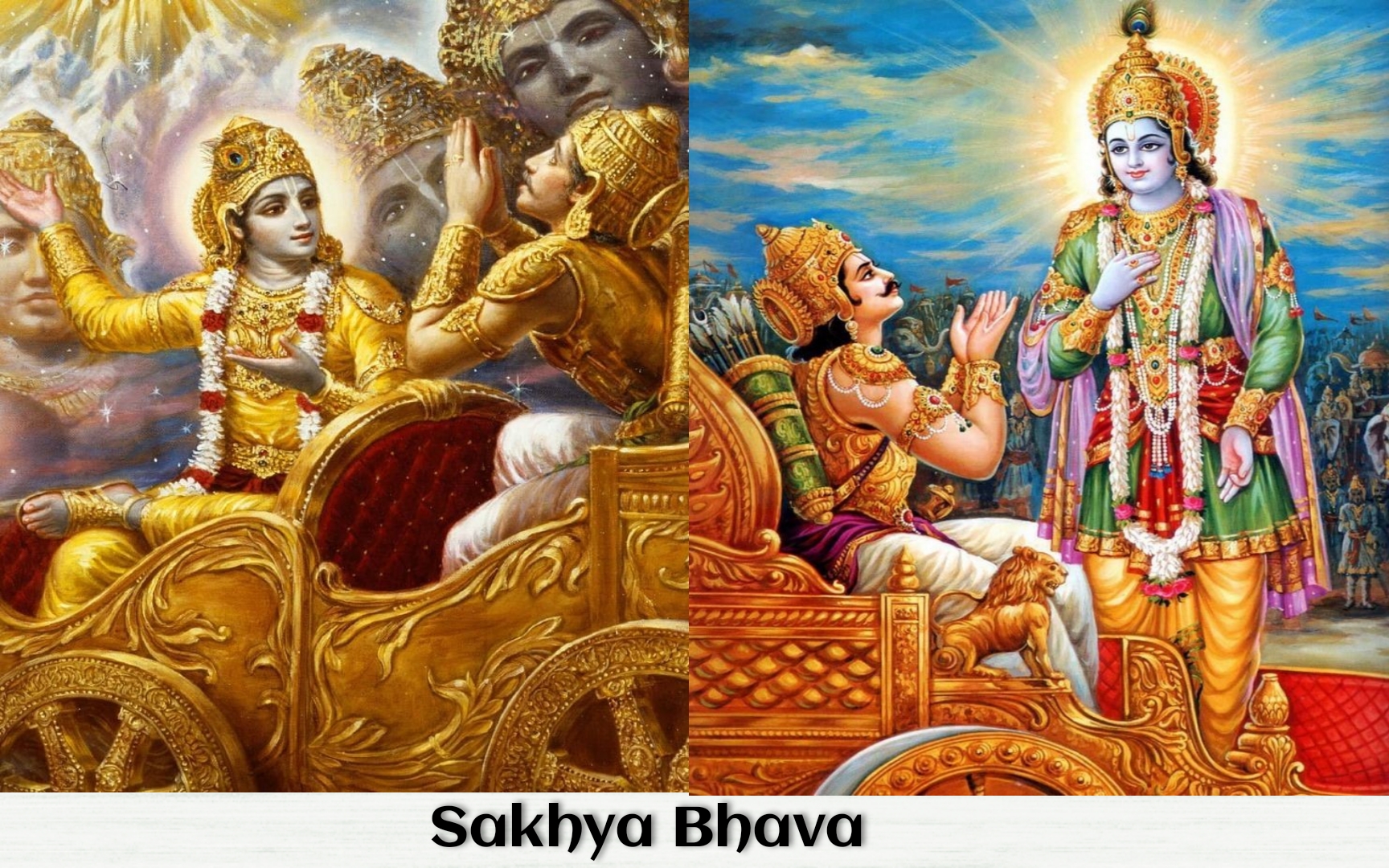
3. Sakhya Bhava – Here, a devotee thinks himself equal to Lord. This Bhava demands openness and understanding as the devotee treats Ishvara as his/her friend. The relationship between Lord Krishna and Arjuna is the perfect example for Sakhya Bhava. Arjuna believed in Krishna and confided in him. For Arjuna, Krishna was his most intimate friend.
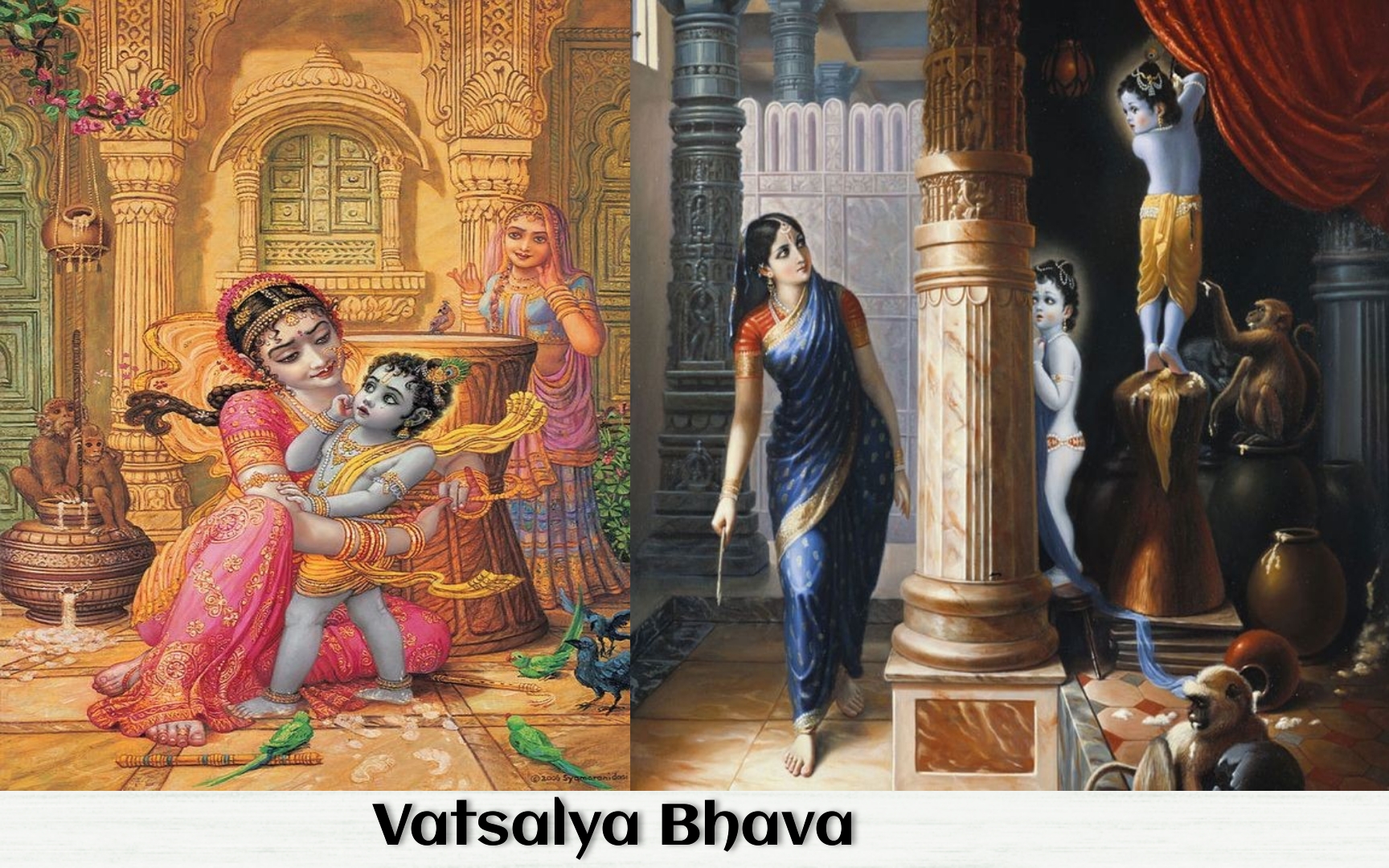
4. Vatsalya Bhava – Here, the devotee has a motherly emotion towards the Lord. The devotee loves the Lord as a small child, and the Lord appears before the devotee in the same relationship as the devotee sees. The relationship between Krishna and his mother - Yashoda, is an apt example for Vatsalya Bhava. Even though Yashoda knew that Krishna was special and divine, she decided to serve him as a mother and adored him.
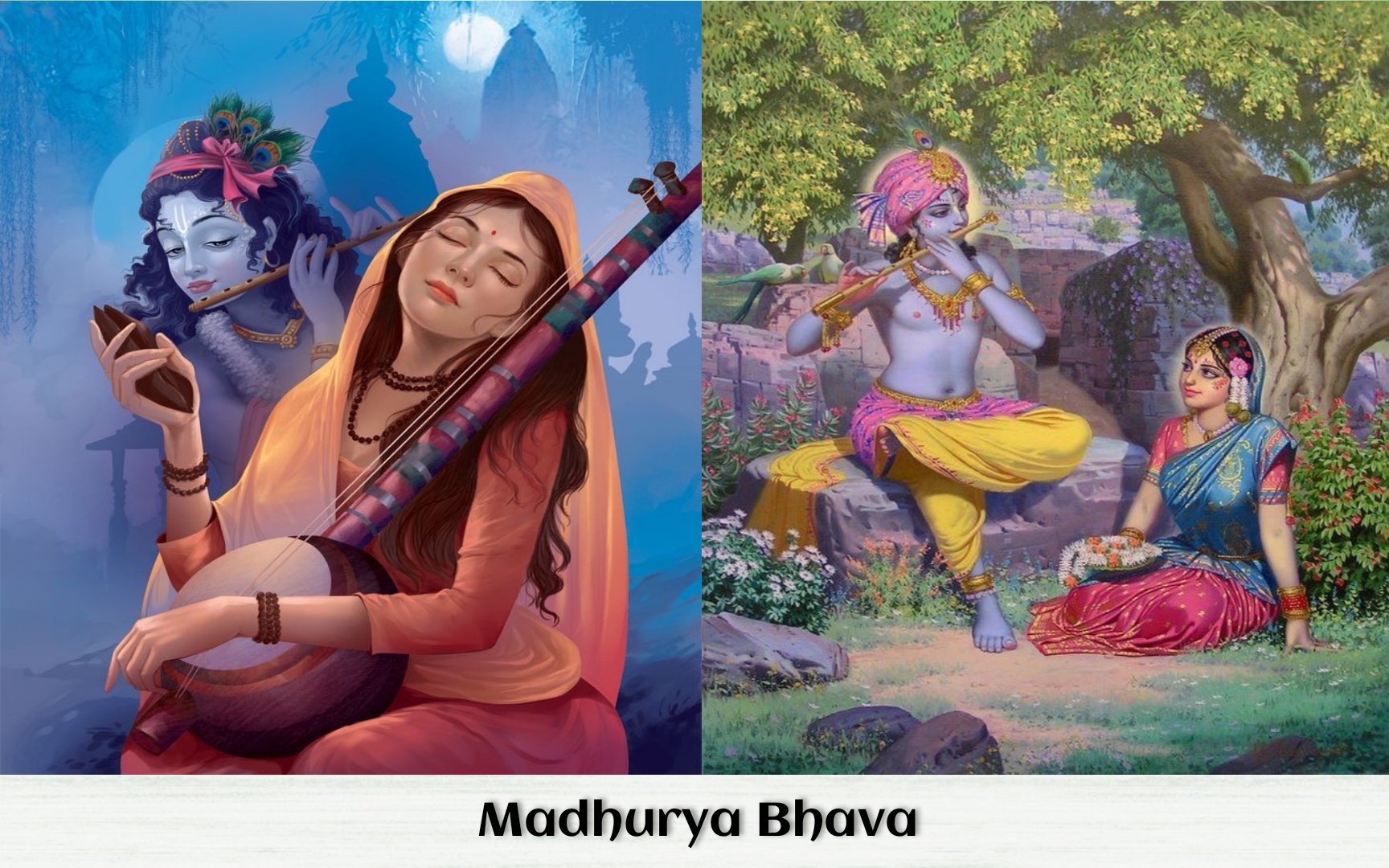
5. Madhurya Bhava – Here, the devotee shares a special bond with God. The devotee feels and connects with the Lord as lover and beloved. The devotee experiences pure bliss in this form of Bhava. Mirabai, Radha, and Andal are some of the examples of devotees for the Madhurya Bhava. For them, everything was Krishna, and they adored the Lord. They experienced the presence of Krishna while awake and while they were asleep – They saw Krishna in everything.
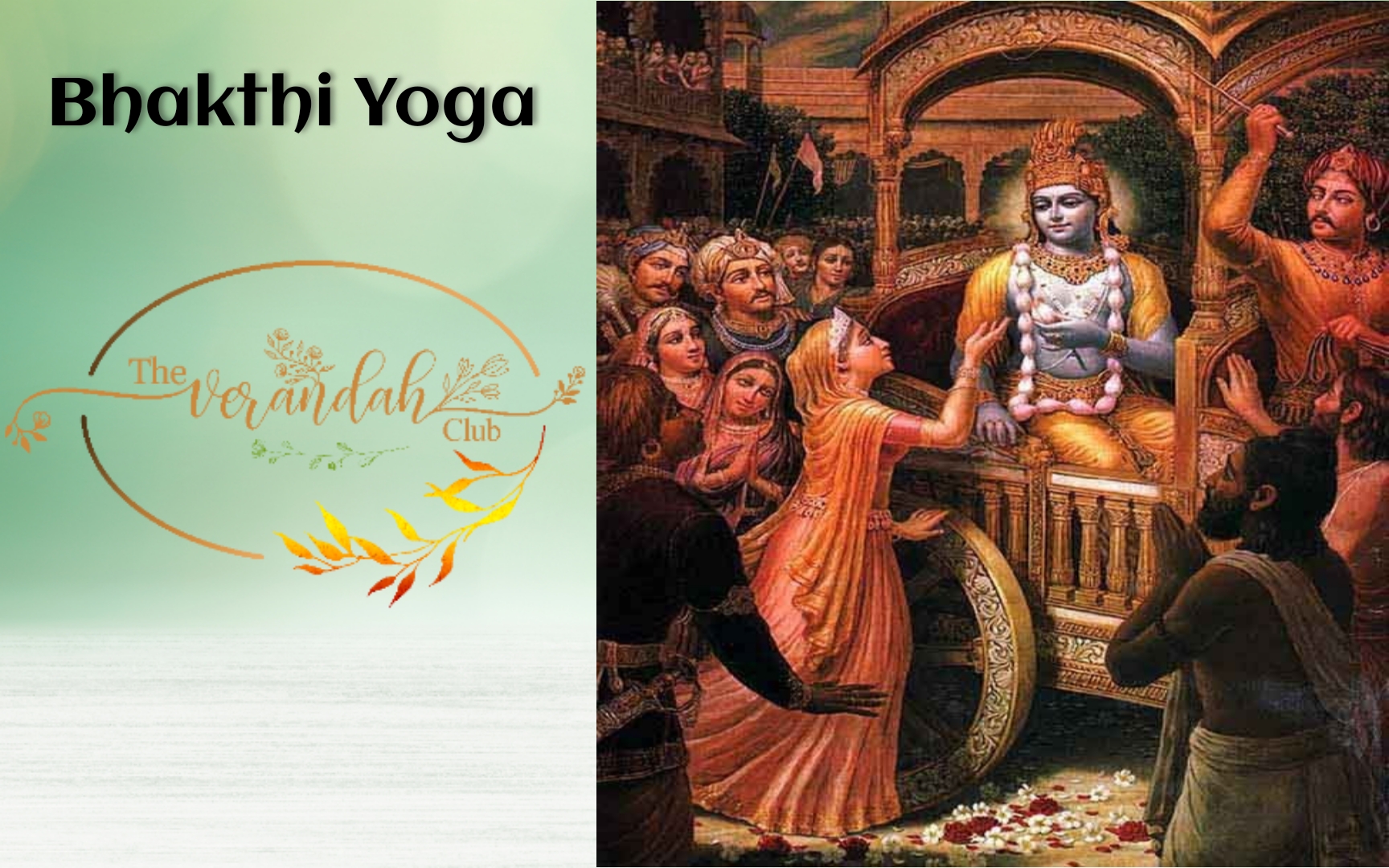
There are many more beautiful stories of the Vaishnavaite the Shaivaite saints who practiced Bhakti Yoga. One thing they all teach us is that no matter what the emotional status of a devotee is, they may choose a bhava that suits their temperament. This may be through one’s work, selfless service to the society, loving worship, or meditation.
NEXT ARTICLE

At the southernmost tip of this mesmerising ensemble lies the majestic Great Nicobar Island, boasting an impressive landmass of about 910 square kilom...

Bharath has always been a land traversed by spiritual masters/ Guru since time immemorial. These spiritual masters have always upheld the core princip...

South India contains its fair share of unique pilgrimage centres. These divine places of worship have a prominent Sthala Purana, devoted followers, di...